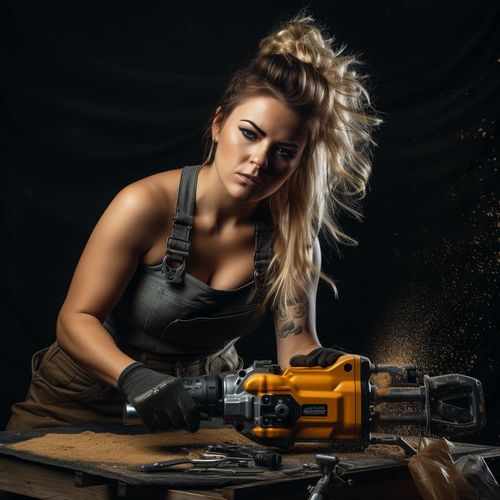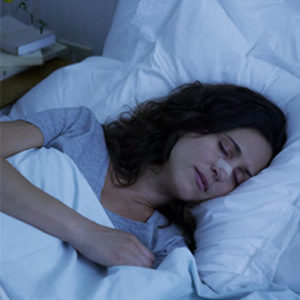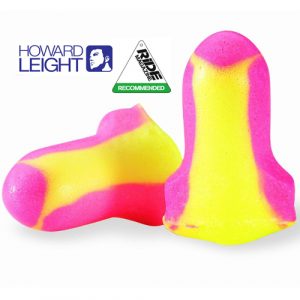Many people take on home improvement projects during weekends. But did you know that you may be exposing your ears to harmful noise levels from DIY tools and equipment. Prolonged exposure to loud noise when doing DIY can cause permanent hearing damage and tinnitus (ringing/buzzing in the ears). Around 10% of the UK population have tinnitus, often caused by noise from construction and DIY.
Safeguarding your hearing when doing noisy DIY is crucial. This post examines DIY noise levels, how to identify damaging noise, and earplug recommendations to protect your hearing.
How Loud Are Common DIY Tools?
The human ear can hear a wide range of volumes, from faint sounds to extremely loud. But as noise increases, permanent injury can occur based on the ‘dose’ of noise exposure.
Experts say noise over 80dB can permanently damage hearing if ears are unprotected. There are many common sounds that can damage your hearing. Here are some typical DIY tools, their noise levels, and maximum recommended exposure times:
- Electric Drill: 85dB – 8 hours
- Lawn Mower: 94dB – 1 hour
- Circular Saw: 100dB – 15 minutes
- Jackhammer: 110dB – 1 minute
Identifying When Noise Levels Are Harmful
With noisy power tools, knowing when sound is too loud is key to protecting your hearing. Follow these general guidelines:
- If a noise is uncomfortably loud, it can likely cause damage.
- Ringing/buzzing after exposure indicates the noise exceeded safe levels.
- Having to shout to be heard by someone 1 metre away signals potentially harmful noise.
- Dulled hearing after exposure shows temporary damage has happened.
Preventing Harmful DIY Noise Exposure
Hearing damage from DIY is preventable by taking precautions. Consider these tips when using power tools:
- Wear hearing protection like earplugs or earmuffs at all times.
- Take regular breaks if using tools continuously.
- Ensure equipment is well-maintained – blunt bits create more noise.
- Use quieter tools when possible.
Recommended Earplugs for DIY Work
To protect your hearing during DIY, I recommend these top-quality earplug options:
Alpine WorkSafe Earplugs for DIY
The Alpine WorkSafe range includes earplugs specifically designed for DIY and construction work. Key features:
- Unique TaperFitTM design ensures a comfortable, secure fit.
- Available in corded and uncorded options.
- Noise Reduction Ratings (NRR) of 23dB and 25dB.
- Soft foam plugs minimise pressure in the ear canal.
3M E-A-R UltraFit 20 Corded Earplugs
These 3M E-A-R UltraFit 20 plugs are ideal for long wear during extended DIY jobs:
- 20dB noise reduction protects against most power tools.
- Polyurethane foam is soft on the ears.
- Corded plugs stay attached when temporarily removed.
- Can be washed, dried and reused.
3M E-A-R Classic Corded Earplugs
The E-A-R Classic corded earplugs offer protection across all DIY noise frequencies:
- Tapered shape fits easily into the ear canal.
- Smooth dirt-resistant surface.
- Available in corded and uncorded versions.
- Highest 32dB noise reduction rating.
3M E-A-R UltraFit Tracer Corded Earplugs
These bright orange UltraFit plugs combine protection with high visibility:
- Makes the wearer easy to spot for safety.
- 20dB noise reduction decreases harmful sound.
- Polyurethane foam keeps cool even in warm environments.
- Corded to prevent loss or dropage during tasks.
Safeguard Hearing During Loud DIY
Don’t jeopardise your hearing health from preventable damage or tinnitus during DIY. Follow the tips in this post and invest in quality ear protection from Alpine, 3M and E-A-R when using power tools. Your hearing is invaluable, so take precautions against excessive noise during home improvement. You can then continue enjoying DIY safely.
Photo by Anthony Cunningham for Zoom Health
Zoom Health is a leading UK supplier of Home Health Tests and Earplugs





